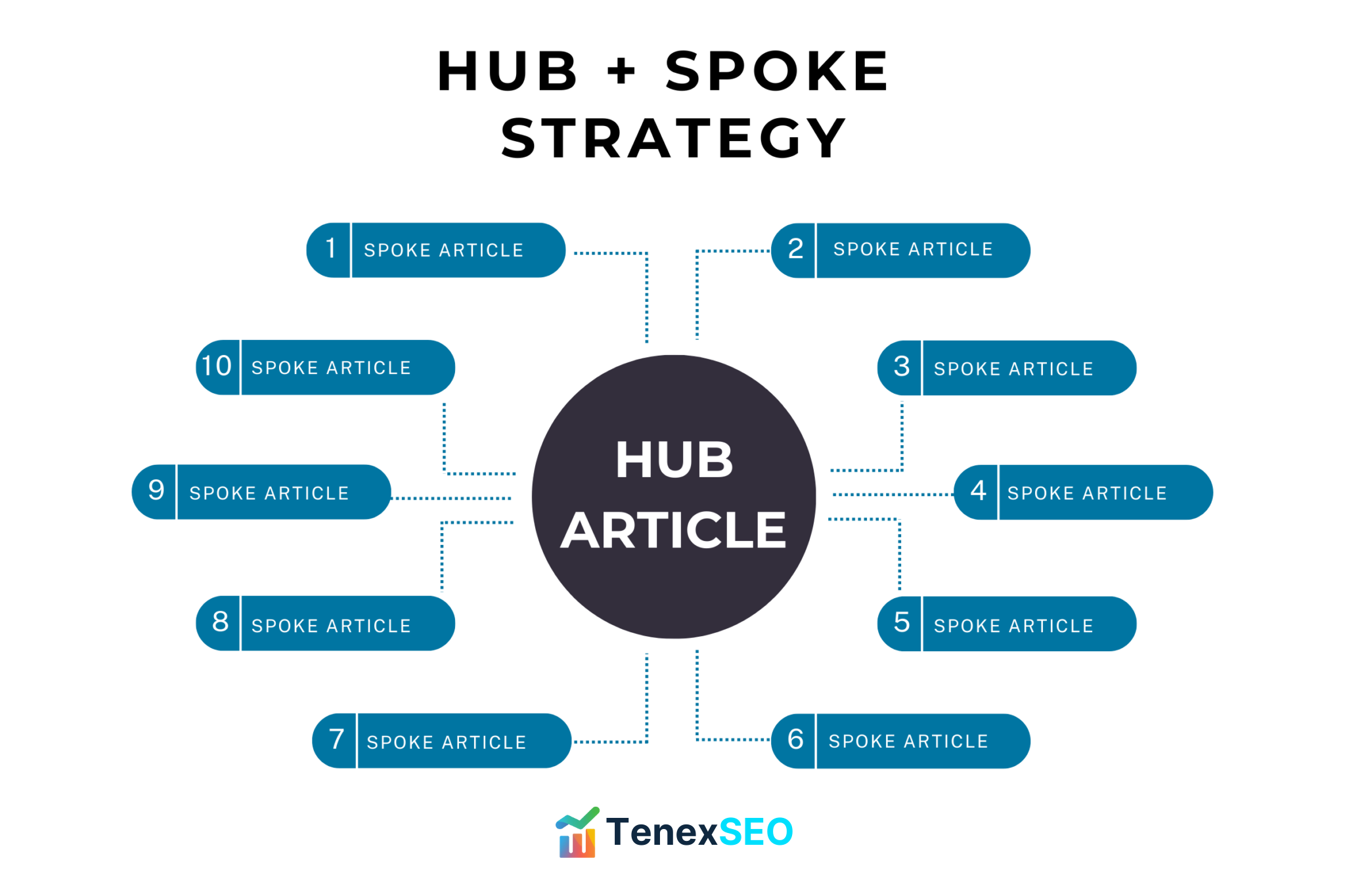About Our Process at TenexSEO
Learn the exact processes and steps that we’ve been using for 5+ years at TenexSEO and other businesses.

Amimul Ihsan Masrafi
Founder, CMO of TenexSEO
Want help with your SEO? We have 5+ years of experience driving high-intent traffic and creating content that converts.
Book a call to see how much potential your website has.
Table of Contents
ToggleMany say, “SEO is dead,” but we disagree and our results prove it.
SEO, or Search Engine Optimization, is the practice of getting your website to rank on the first page of search engines like Google.
But simply being online isn’t enough anymore. To get noticed, you need to stand out. And that’s where SEO steps in, acting as a spotlight for your website.
However, not all SEO strategies are the same. Having a clear, effective plan is what sets successful campaigns apart.
Think of it like opening a coffee shop without a business plan. It’s possible, but the odds of long-term success are slim. SEO works the same way, relying on a solid strategy, the right tools, and a team of skilled content creators.
Discovery Audit: Learning About Your Company
The first piece of the puzzle involves familiarizing ourselves with your company, brand, and website.
After you’ve applied to work with us, we’ll review your application and set up a sales call.
From there, you’ll connect with one of our owners, Amimul Ihsan Masrafi, to learn more about our packages and the advantages of teaming up with TenexSEO.

Your Homework
Here, you can expect some light homework to help our team get up to speed.
We’ll want to know about your business, industry background, company history, customer profile, etc. This information will be kept on file so our writers can craft high-quality articles that speak directly to your future visitors.
You can get the process started by filling out this form: Get Started.
Our Homework
Next is the first phase of our Tenex: strategy. Think of this as detective work.
We’ll perform an in-depth analysis and audit of your website to get a better understanding of your existing content.
We’ll reach out with the results and if we think it’s the right move to start working together.
In this phase, we’ll discuss our pricing and decide on a monthly package together.
If we work together, we’ll move into the next research phase: keywords and competitors.
Keyword Research
The foundation of our approach is keyword research, as it maps out the topics to target, the timing of content, and how each piece fits into your overall strategy.
If you get this step wrong, you risk wasting time and effort on the wrong focus areas. That’s why we dedicate extra time to get it right from the start.
What’s Keyword Research?
Imagine you run an online coffee shop. Instead of a physical storefront, you’re selling coffee beans and accessories through your website.
Keyword research is like figuring out the terms people are typing into search engines (like Google) when they’re looking for coffee products.
Perhaps they search for “best coffee beans for espresso” or “organic coffee subscription.”
By understanding these phrases, you can optimize your website and create content around these terms, making sure that when someone searches for them, your coffee shop shows up.
Just like you’d want coffee lovers to find your shop, we want your business to be easily found by the right audience!
We use a proven “hub and spoke” strategy to organize and optimize this process.

Hub and Spoke Strategy
The hub and spoke model is a widely recognized SEO strategy, and it’s incredibly effective. It helped us scale Cimalp to $10 million in ARR.
Let’s use our coffee shop example to explain how it works.
Imagine your main coffee shop is located in the center of a busy neighborhood. This is your Hub, where the main focus of your content resides.
From your main coffee shop, several pathways lead to smaller coffee-themed spots throughout the neighborhood. These smaller spots are your Spokes.
Each spoke focuses on a different aspect of coffee:
- One might detail how to brew the perfect cup of coffee.
- Another could share different coffee bean types and their flavors.
- A third might offer fun facts about the history of coffee.
In terms of SEO and website content:
Hub: This is your comprehensive article or guide that covers all the essentials about a specific topic. For example, “The Ultimate Guide to Brewing Coffee at Home.”
Spokes: These are more focused articles related to your main topic. Using our coffee shop example, spokes could be “5 Popular Coffee Bean Varieties,” “How to Choose the Right Coffee Grinder,” or “The History of Coffee Around the World.” Each spoke links back to the hub, and the hub will often link to the spokes as well. This creates a strong internal linking structure that helps both users and search engines navigate your content easily.

Why Do We Use the Hub and Spoke SEO Strategy?
The Hub and Spoke model aligns perfectly with our Tenex approach, and here’s why:
- Organization: This strategy keeps content organized in a clear, user-friendly structure. Visitors can start with the hub for an overall guide and then dive deeper into specific topics through the spokes. It’s like walking into a coffee shop and finding clear sections for beans, brewing methods, and coffee accessories—all neatly organized.
- Growth: Search engines prefer interconnected and well-structured content. Having a central hub with several related spokes signals to search engines that your site offers valuable, comprehensive information on a specific topic. This helps establish your authority in that niche.
- Increased Engagement: When visitors engage with one article (spoke), they’re more likely to explore others, whether that’s linking back to the hub or clicking on another related spoke. This keeps them on your site longer, which benefits your SEO.
Our goal is straightforward: create high-quality content that signals to search engines, “This company is an expert in {your industry}.”
The more content you have, the better search engines can assess your expertise—and with that expertise comes authority.
Ultimately, a search engine’s job is to match users with content that:
- Answers their search intent
- Demonstrates industry expertise
- Showcases real experience
- Builds trust with the audience
And how do we do that? With well-crafted blog articles, and plenty of them.
Writer Briefs
Once we’ve completed our keyword research, we’re ready to map out our content strategy.
At this stage, we know exactly what direction we’re heading, and now it’s time to consolidate everything into a detailed content brief (or outline).
Let’s continue with the coffee shop analogy.
Imagine you want to tell the world about your coffee shop and hire someone to write articles. But, the writer has never stepped foot in your shop or tasted your signature brew.
You can’t just say, “Write about my coffee shop!” They might miss key details, like your secret brewing method or the cozy atmosphere you offer.
This is where the writer’s brief comes in.
A brief is like giving that writer a detailed tour of your coffee shop, a recipe for your special blend, and a taste of your best brew.
It includes:
- Direction: What should the article cover? (e.g., “Talk about our unique blend of beans sourced from local farms.”)
- Keywords: What specific terms or phrases (like “best coffee in town” or “artisan coffee shop”) should be included?
- Tone and Style: Should the article be casual and friendly or more formal and informative? (e.g., “Keep it warm and inviting, like a cup of coffee on a chilly morning.”)
- Goals: What do we want to achieve with the content? Do you want people to visit your shop, sign up for your newsletter, or learn more about your brewing process?
We use briefs to communicate our vision for every piece of content.
Each section of the brief is tailored for SEO and designed to speak to search engines. Here’s where our advanced tools come into play—our team uses software like Ahrefs and SEOwind to streamline the process.
This helps eliminate guesswork, analyze what competitors are doing (or missing), and position your content to outrank current search results.
Working With Writers
Once the brief is ready, our writers get to work crafting engaging, high-quality content. This is the third phase of our TenexSEO process.
When the draft is complete, we make sure it meets our quality standards by:
- Double-checking keyword placement
- Ensuring any images used are royalty-free
- Running the draft through a plagiarism checker
- Verifying the writer adhered to the brief
- Ensuring tone and messaging are spot on
- Creating an inviting, engaging title
- Following brand guidelines
If edits are needed after publication, we’ll reach out to the writer, share your feedback, and collaborate with them to refine the article.
Once everything is finalized, we begin the upload process, ensuring the content is properly formatted and ready to perform.
Uploading Articles and Optimizing On-Page SEO
The next step is uploading the content and preparing it for publication.
At this stage, we follow on-page SEO best practices to continue optimizing the article.
What is On-page SEO?
Let’s continue with our coffee shop analogy!
Imagine your coffee shop is more than just a place to grab a cup of joe; it’s a cozy, themed space with different areas where people can relax, work, or enjoy live music. But to make sure customers have a great experience, you need to set up clear directions, menus, and a welcoming atmosphere.
On-page SEO is like arranging your coffee shop so everything flows smoothly, making it easy for customers (or search engines) to navigate and enjoy their visit.
We focus on several key elements:
- Title Tags: Think of this as the big neon sign outside your shop that says, “Best Coffee in Town!” It grabs attention and tells people (and search engines) what the article is about, encouraging clicks.
- Meta Descriptions: Right under that sign, there’s a small chalkboard that explains what your coffee shop offers: “Freshly brewed coffee, warm pastries, and cozy vibes!” This is your meta description, summarizing the content of your article for search engines.
- Headers and Subheaders: Inside your shop, there are signs for different sections: “Espresso Bar,” “Brewed Coffee,” and “Pastry Counter.” These are like your article’s headings and subheadings, helping organize the content and making it easy to navigate.
- Keyword Usage: If your regular customers often talk about “rich espresso” or “organic coffee,” it makes sense to use these phrases in your menus and signs. In the article, this means naturally incorporating relevant keywords throughout the content.
- Image Alt Text: You’ve got pictures of delicious lattes and pastries around your shop, but what if someone can’t see them? A brief description like “Steaming cappuccino with a heart-shaped latte art” explains what the image shows. This is like the alt text for images, helping both users and search engines understand what’s in the picture.
- Internal Links: You have signs inside your shop pointing customers to different sections, like, “Enjoyed your coffee? Try our signature croissants!” These are like internal links within your article, guiding readers to other relevant content. Using our hub and spoke strategy, we plan these links to ensure your content is interconnected.
On-page SEO ensures that when someone visits your article (or coffee shop), they can easily find what they’re looking for, understand each section, and discover new things they didn’t know they were interested in.
Additionally, it helps search engines understand what your content is about so they can present it to the right audience.
Once everything is formatted and optimized, we’re ready to publish the article and track its performance.
Analysis and Reporting
The final step in our process brings us back to the tools that make everything work seamlessly.
Our team continuously monitors, tracks, and provides detailed reports on the performance of your content.
SEO is like tending to a garden: your articles are the seeds, and over time, they grow and thrive, attracting more visitors to your website.
Understanding that SEO content is a long-term investment, we provide you with monthly and quarterly reports to help you track the success and progress of your efforts.
These reports ensure you’re always in the loop about how your content is performing, helping you see the fruits of your SEO investment.
Next Steps
TenexSEO is grounded in strategy, software, and a strong team of writers.
While every client is different, our repeatable, systematic process allows us to scale content efficiently and effectively.
Want help driving organic traffic to your website?
